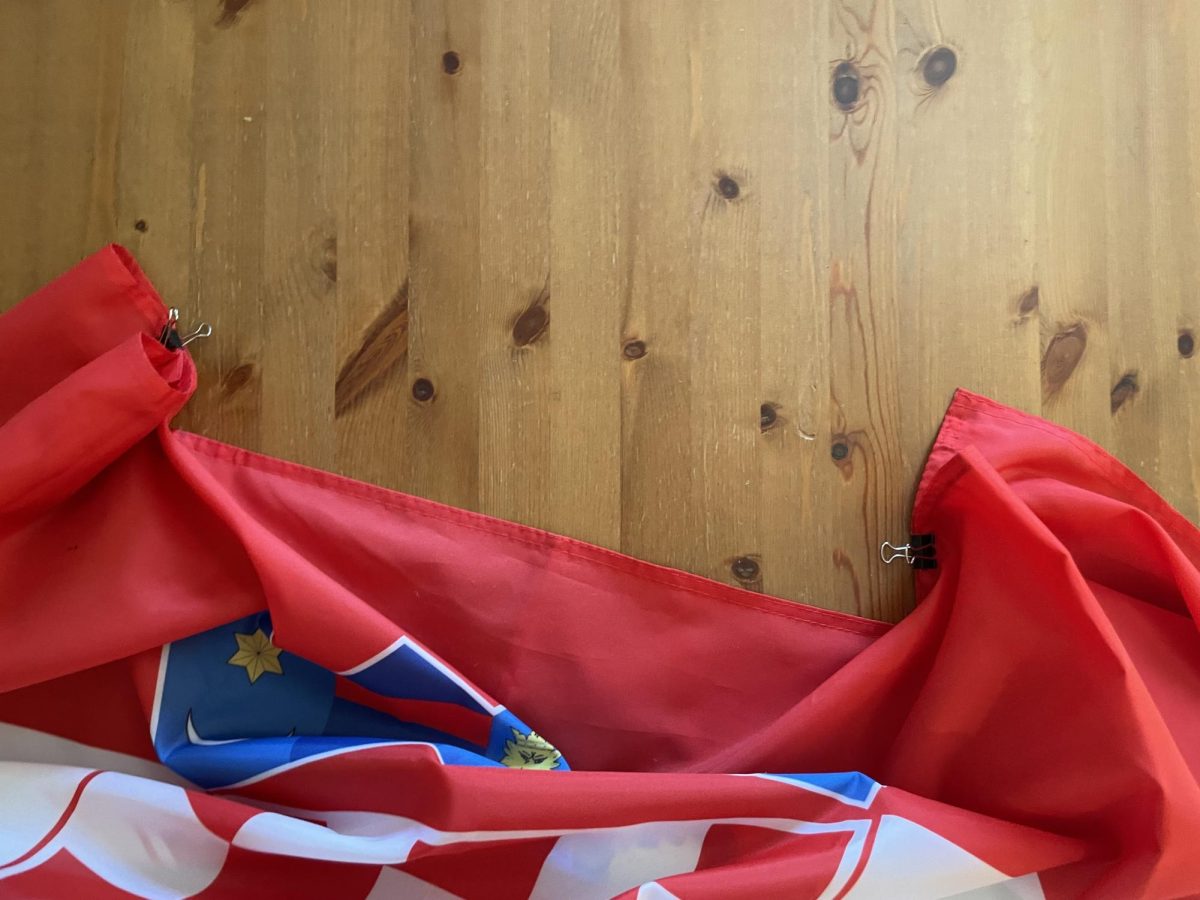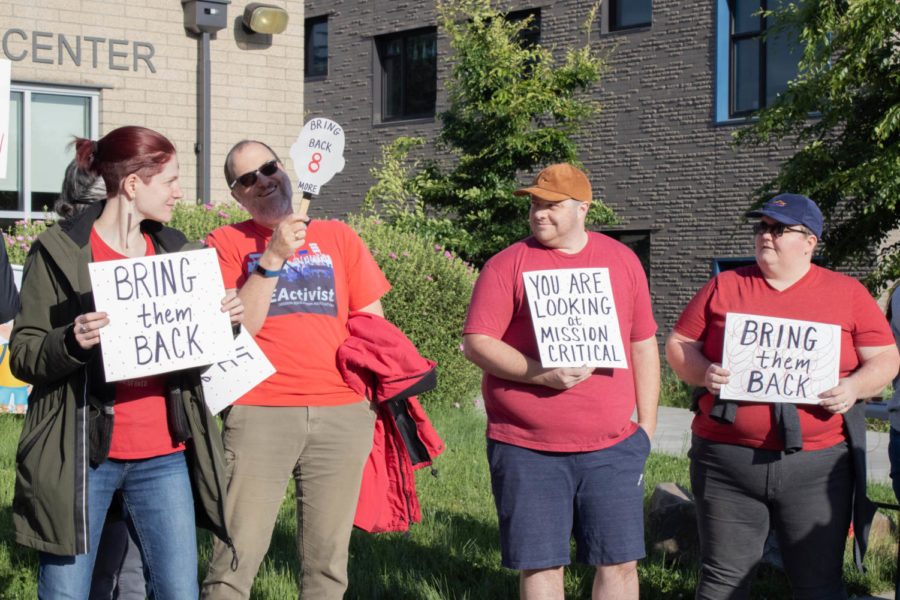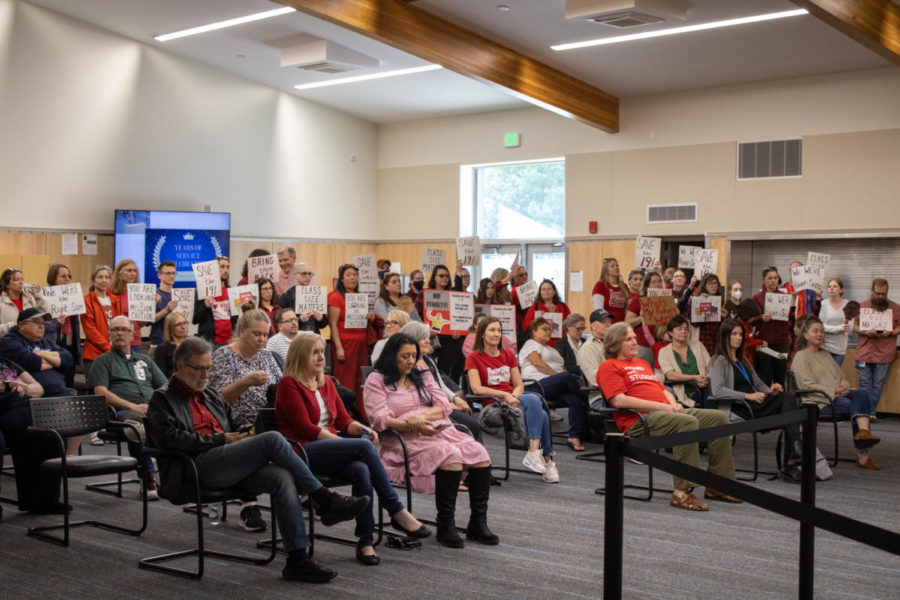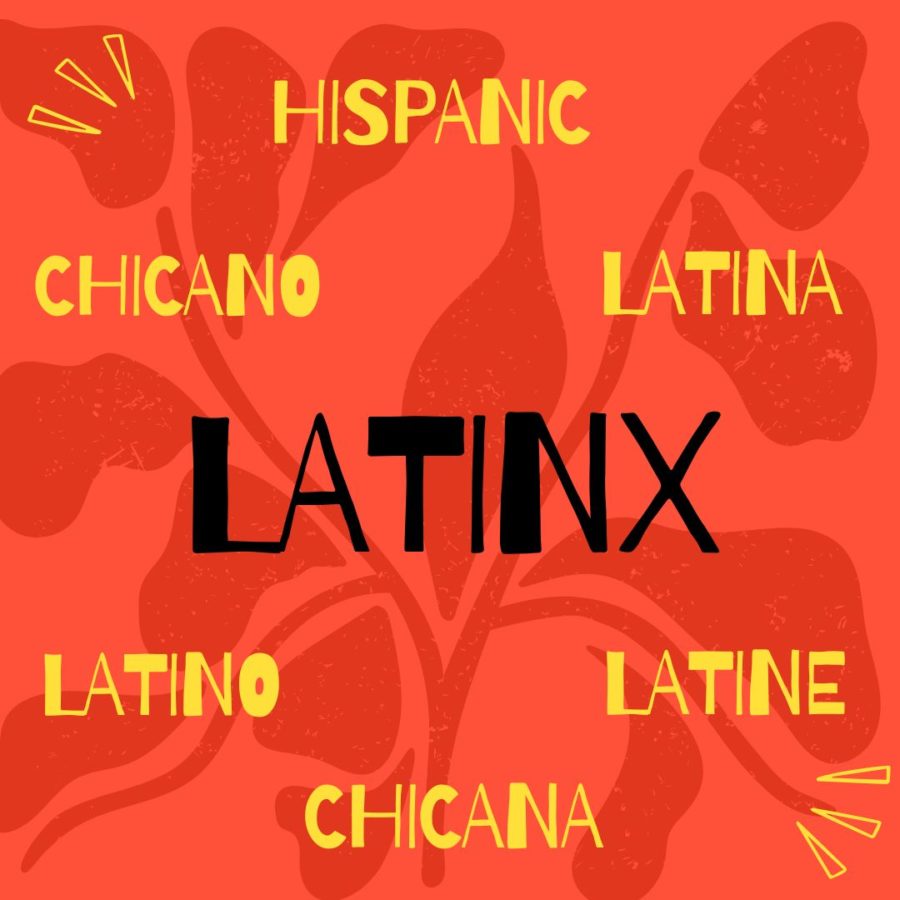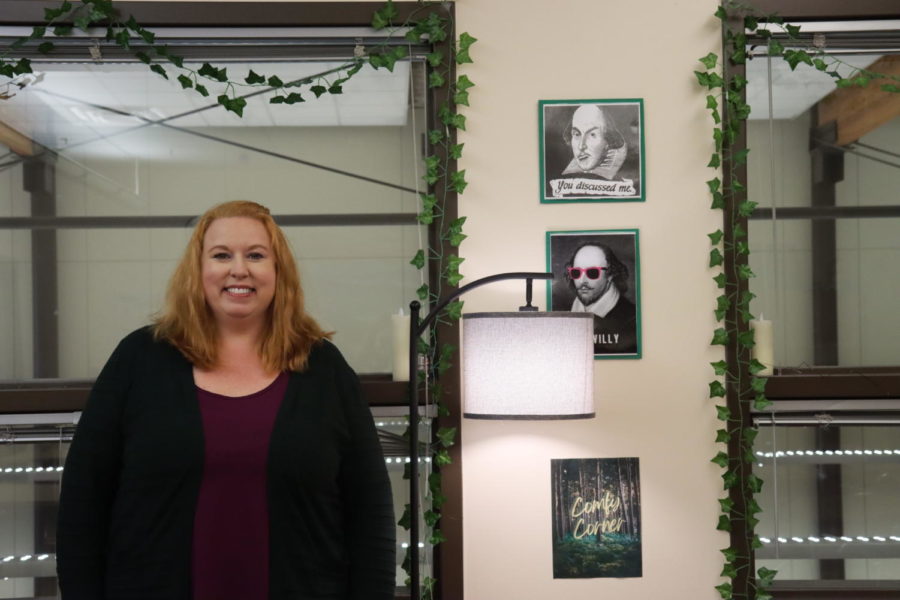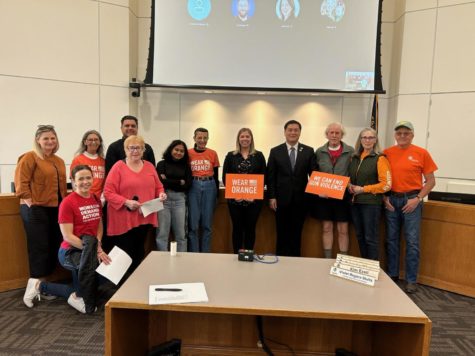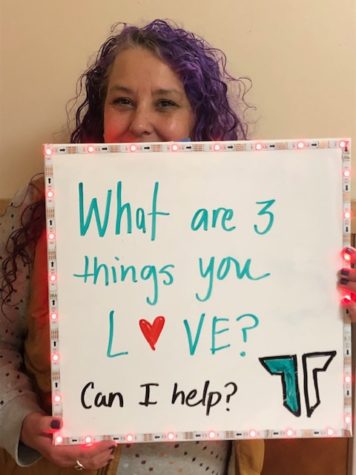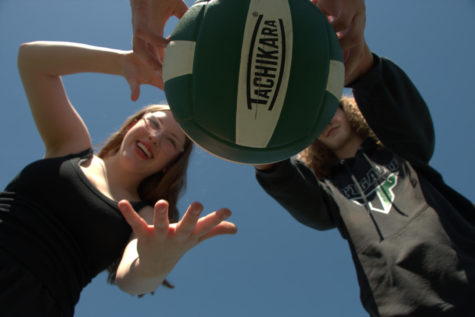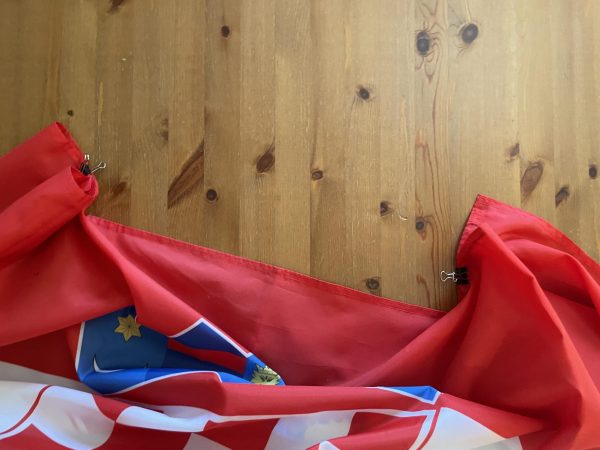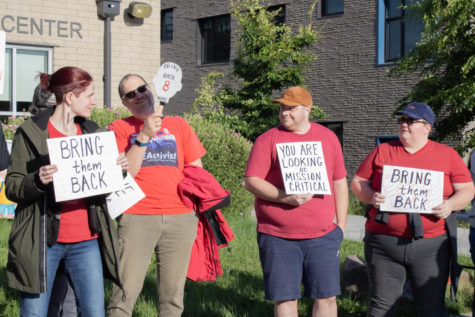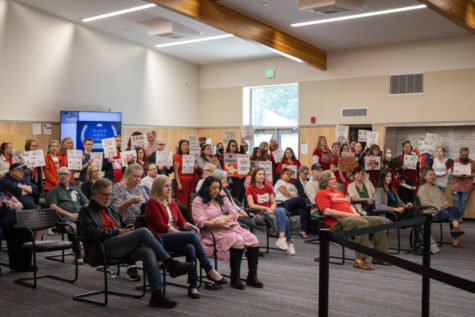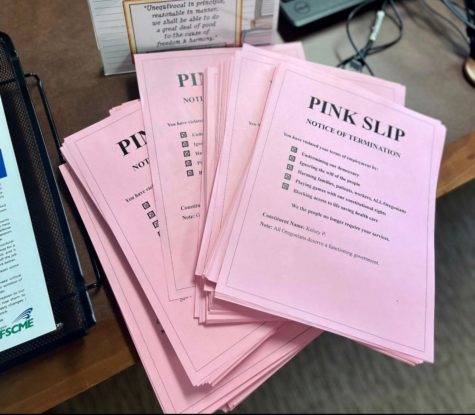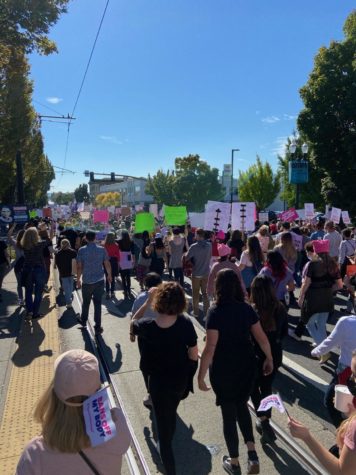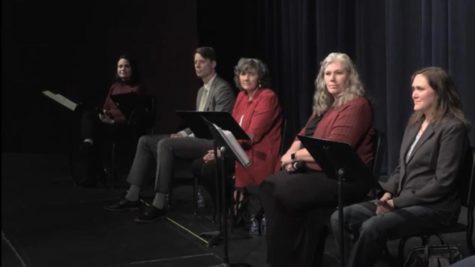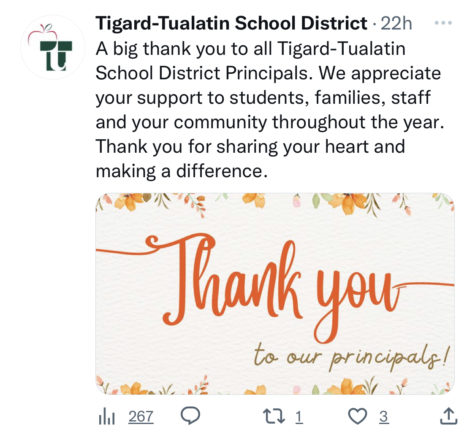Two-Way Immersion is only two years away
In just two years, THS will be the first bilingual high school in the Tigard-Tualatin School District, but what does that mean?
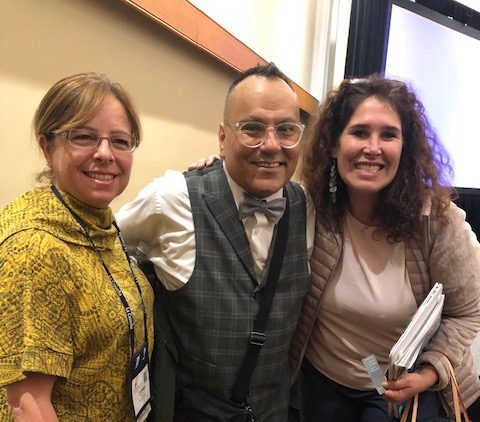
Photo courtesy of Giselle Escobar
Multicultural Coordinator Giselle Escobar, (right) met with Dr. Jose Medina, (center) a speaker at La Cosecha. The conference, held in Albuquerque in November, was a national gathering about two-way immersion programs.
December 20, 2019
Starting with the 2021-2022 school year, Tigard High School will be instituting a new language immersion program called “Two-Way Immersion” or “TWI.” TWI is a program offered at hundreds of schools across the U.S. and will be available, but not required, for all Tigard students. Students enrolled in TWI are in two language groups and are taught in both languages. Metzger Elementary, Bridgeport Elementary, Fowler Middle School, and Hazelbrook Middle School already provide TWI with English and Spanish immersion; Tigard High will be the next school to initiate it in two years.
The first TWI program in the district was established in 2011 at Metzger Elementary. The school started off with a kindergarten class of 28 students, with half of the class consisting of Spanish speakers. Typically in kindergarten, Spanish speakers are taught 90 percent in Spanish and 10 percent in English, where English is incorporated in music, library time, and physical education. In first grade, the Spanish-to-English-speaking ratio changes to 80:20, then 70:30 in second grade, 60:40 in third grade, and 50:50 in fourth and fifth grade. At the fifth and fourth grade level, one semester is taught in English and the other in Spanish. The percentage that will be put in place at Tigard is yet to be determined.
The program, while open to anyone, has some restrictions as to who is able to join and when. After January of kindergarten year, if there are any move outs, kids are pulled from the waitlist and placed directly in the program regardless of language acquisition. However, after that point, students cannot freely join and must take an assessment to determine if they are proficient enough in the Spanish language or be a transfer from another TWI school.
Multicultural Coordinator Giselle Escobar taught the TWI kindergarten class at Metzger before coming to Tigard. She says research has shown that when someone is fluent in their native language, then they can learn a second language much faster.
“We don’t teach kids how to read or write in English, [but] although that is the case, they test as high as the English-only classrooms in English reading,” Escobar said.
Additionally, a presentation to the State Board of Education in 2014 available through oregon.gov showed results that that TWI students in other Oregon districts have achieved at or above grade level in math and tended to enroll in higher-level math courses than their non-TWI peers. Additionally, per capita, more TWI students than non-TWI students in these districts passed the high school exit exam. Furthermore, according to the same data, most TWI students have indicated that they plan to attend a four-year college after high school, that they believe getting good grades is important, and that they will not drop out of school.
Roughly 55-65 students who are currently enrolled at Fowler will be continuing the TWI program at Tigard in two years; however, the number of students enrolled in 2021-2022 school year could be much higher. The benefits of TWI are endless, but here at Tigard, the goal in creating TWI is to be able to provide a higher academic education for bilingual students.
“The student going to the bilingual school is going to be a different alumni; if it’s a non-Latino student they gain a completely different view of the world,” Escobar said. “For one, they understand Latin culture; two, they respect it, and three, they value not only what is theirs but also what is of other cultures—they’re completely bilingual and multicultural which makes their way of thinking so much better.”
Principal Brian Bailey is still in the process of learning how the program works and what it would look like at Tigard. He explained that the program had been approved before he was hired and will take a while before it is ready.
“We have some teachers that are bilingual that may be interested, but I don’t know how many, and I don’t know how proficient they are,” Bailey said. “I have heard of some schools that have struggled with hiring in the past, but our hope, as far as I am aware, is to do quite a bit of hiring.”
Bailey is trying to keep up with the requests that he’s received from families who want their children to attend Tigard but are unsure because Tigard doesn’t offer TWI.
Bailey has seen the impact of dual immersion programs with families he knows. One non-Spanish speaking, white family whose child was enrolled in a dual immersion program had to make a tough decision. “Even though the family wanted to move because of jobs, they absolutely refused because they didn’t want their kid out of the program.” Bailey said. “Their kid was learning so much and having such a great experience in becoming bilingual that they made life choices as a family to stay where they were.”
As part of the preparation process, Bailey, Escobar, and other Tigard staff members traveled to Albuquerque, NM in November to attend La Cosecha, a dual language conference that gave them a better idea of how Tigard will take on TWI.
La Cosecha brings together educators, students, parents, researchers, and other dual language supporters across the nation. The event is the largest dual language conference in the U.S. and is only growing larger with the addition of representatives from nine foreign countries who joined this year’s conference.
Although the hiring process has yet to begin, Bailey feels confident that no staff member will be asked to leave in order to make room for bilingual teachers. The funds being used will be enough to cover all expenses. Bailey still doesn’t know how many or what kinds of classes will be created or available for TWI students as the final decisions have not yet been made. For this reason, he is currently planning a meeting with the district to discuss what the staff learned from La Cosecha and to create an outline of how TWI will be incorporated at Tigard.


